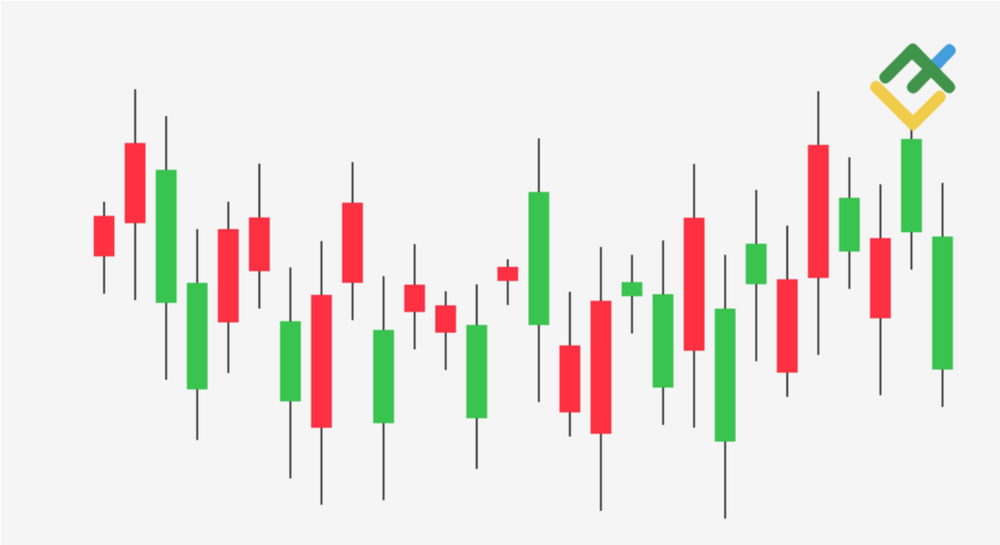
Despite the hawkish statements from Fed Chair Jerome Powell and other officials, the US dollar is still facing pressure, with the USDX index in a medium- and long-term bear market. Therefore, market participants will closely analyze the minutes from the recent May Fed meeting, where another pause was announced, for further insights into the future of monetary policy.
In the coming week of 26.05.2025–01.06.2025, market participants will focus on the publication of crucial macroeconomic statistics from the US, Australia, Japan, Germany, Canada, and the outcome of the Reserve Bank of New Zealand meeting.
Furthermore, next week marks the final trading week of the month, which may cause unexpected market fluctuations as investors rebalance their portfolios.
Note: During the coming week, new events may be added to the calendar, and/or some scheduled events may be canceled. GMT time
The article covers the following subjects:
Major Takeaways
- Monday: No important macroeconomic statistics are scheduled. The US is celebrating Memorial Day.
- Tuesday: US Consumer Confidence Index.
- Wednesday: Australian CPI, Reserve Bank of New Zealand interest rate decision, Fed minutes release from the May meeting
- Thursday: Banks and stock exchanges in Europe are closed due to Ascension Day, US annual GDP for Q1 (second estimate), and Japanese CPIs.
- Friday: Australian retail sales, German retail sales, German preliminary CPI, Canadian GDP, and US PCE indexes.
- Key event of the week: US PCE indexes.
Monday, May 26
Banks and stock exchanges in the United States will be closed due to Memorial Day. There are no important macroeconomic statistics scheduled to be released. Trading volumes and market activity will be lower than usual.
Tuesday, May 27
00:00 – JPY: Speech by Bank of Japan Governor Kazuo Ueda
In his upcoming speech, Bank of Japan Governor Kazuo Ueda is expected to comment on the bank’s monetary policy. Markets typically react strongly when the Bank of Japan governor addresses this topic, especially if he makes unexpected remarks, leading to increased volatility in yen trading as well as in Asian and global financial markets. Conversely, if he does not mention monetary policy, the market reaction will likely be subdued.
14:00 – USD: Consumer Confidence Index
A Conference Board’s survey of nearly 3,000 US households evaluates current and future economic conditions and overall economic sentiment. Consumer confidence in the country’s economic development and stability is a key indicator of consumer spending and, consequently, economic performance. High confidence levels suggest economic growth, while low levels indicate stagnation.
Previous indicator values: 86.0, 92.9, 98.3, 104.1 in January 2025, 104.7 in December 2024, 111.7, 108.7, 98.7, 103.3, 100.3, 100.4, 102.0, 97.0, 104.7, 106.7, 114.8, 110.7, 102.0, 102.6, 103.0, 106.1, 117.0, 109.7, 102.3, 101.3, 104.2.
The increase in the indicator values will bolster the US dollar exchange rate, while the decrease will weaken it.
Wednesday, May 28
01:30 – AUD: Consumer Price Index
The Consumer Price Inflation Index, published by the Reserve Bank of Australia and the Australian Bureau of Statistics, gauges retail prices of goods and services in Australia. The CPI is the most significant indicator of inflation and changes in consumer preferences. A high indicator reading is positive for the Australian dollar, while a low reading is negative.
Previous monthly values: +2.4% in March and February, +2.5% in January 2025, +2.5% in December 2024, +2.3% in November, +2.1% in October and September, +2.7% in August 2024.
The Australian central bank’s CPI inflation target ranges between 2% and 3%. According to the minutes of a recent RBA Board meeting, the bank may need to increase interest rates over time to bring inflation back to the target range and take further measures in the coming months to stabilize monetary conditions in Australia.
Now, the RBA, like most of the world’s other major central banks, is facing persistently high inflation.
The expected positive CPI reading will likely strengthen the Australian dollar. If the indicator readings are worse than the forecast or the previous value, the Australian dollar will face short-term negative effects.
02:00 – NZD: Reserve Bank of New Zealand’s Interest Rate Decision. RBNZ Accompanying Statement
Previously, the Reserve Bank of New Zealand (RBNZ) indicated that the economy no longer required the same level of monetary stimulus. Afterward, the bank decided to ease the monetary policy in August 2024, reducing the official cash rate by 0.25% to 5.25%. Prior to this change, the RBNZ maintained a pause for eight consecutive meetings. In October and November, the rate was cut again by 0.50% each time. In 2025, the RBNZ continued its policy easing cycle, reducing the interest rate to the current level of 3.50%.
Economists expect New Zealand’s borrowing costs to fall further amid a sustained slowdown in inflation and a volatile labor market.
The New Zealand currency faced significant pressure after the RBNZ opted to cut the interest rate. The accompanying statement revealed that the decision was made given expectations of a further drop in inflation, which is gradually returning to the target range of 1.0%–3.0%. Inflation expectations have also decreased.
At this meeting, the RBNZ may either reduce the interest rate again, advocating for further monetary policy easing, or leave the rate at the current level. Market participants monitoring the New Zealand dollar performance should be prepared for a notable uptick in volatility during this time.
In the accompanying statement and commentary, the RBNZ officials will explain the interest rate decision and the economic factors that influenced it.
03:00 – NZD: Reserve Bank of New Zealand Press Conference
RBNZ Governor Adrian Orr will comment on the rate decision. Typically, volatility in the New Zealand dollar increases during the meeting. Orr’s speeches often serve as an unofficial source of information about the future direction of the RBNZ’s monetary policy. He believes that the country’s monetary policy should be aligned with the country’s employment performance and financial stability, as well as inflation.
18:00 – USD: Federal Open Market Committee Meeting Minutes
The FOMC minutes release is extremely important for determining the course of the Fed’s current policy and the prospects for US interest rate hikes. Volatility in financial markets usually increases during the minutes’ publication, as they often reveal changes or provide clarifications from the latest FOMC meeting.
Following the December 18, 2024, meeting, central bank governors decided to reduce the federal funds rate by 0.25% to 4.50% and indicated a leaning towards further monetary policy easing to bolster the labor market.
However, Fed Chair Jerome Powell stated that a pause in rate cuts is also possible. He emphasized that the US Fed officials remain confident that inflation is on track to reach the 2.0% target and that there is no need to rush to reduce rates given continued economic growth and a robust labor market.
Following the meetings in the first half of 2025, the Fed’s interest rate remained at 4.50%.
Many market participants now assume that the Fed will maintain the interest rate unchanged at 4.50%. Moreover, long-term forecasts suggest there may be a gradual reduction by the end of 2025, indicating fewer adjustments than previously anticipated.
The dovish tone of the minutes will positively impact stock indices and negatively affect the US dollar. The hawkish Fed’s rhetoric on the monetary policy may boost the greenback.
Thursday, May 29
Banks and exchanges in Europe will be closed to celebrate Ascension Day. Thus, trading volumes and market activity during the European trading session will be lower than usual.
12:30 – USD: US GDP Annual Growth Rate for Q1 (Second Estimate). Core Personal Consumption Expenditures for Q1 (Second Estimate)
The GDP data is one of the key indicators, along with labor market and inflation data, for the US Fed in terms of its monetary policy. A positive indicator reading strengthens the US dollar, while a weak GDP report is harmful for the currency. In Q4 2024, GDP grew +2.4%, after gaining +3.1% in Q3, +3.0% in Q2, +1.6% in Q1 2024, +3.2% in Q4 2023, +4.4%, +2.4% in Q2, +2.8% in Q1 2023.
If the data indicate a decline in GDP in Q1 2025, the US dollar will face significant pressure. Conversely, positive GDP figures will bolster the greenback and US stock indices.
The preliminary estimate stood at -0.3%.
Personal Consumption Expenditures (PCE) data reflect the average amount of money consumers spend per month on durable goods, consumer goods, and services. The core PCE price index excludes food and energy prices. The annual core PCE is the main inflation gauge used by the US Fed as the primary inflation indicator. Quarterly data is published within a broader GDP report. This data serves as an indirect gauge of consumer spending, the main driver of the US economy.
The inflation rate, along with the labor market and GDP data, is crucial for the Fed in determining its monetary policy. Growing prices exert pressure on the central bank to tighten its policy and raise interest rates.
The PCE data above the forecasted and/or previous values may boost the US dollar, while a decline in the reading will likely exert a negative impact on the greenback.
Previous quarterly values: +2.6% (in Q4 2024), +2.2%, +2.8%, +3.7%, +2.0% (in Q4 2023).
The preliminary estimate stood at +3.5%.
23:30 – JPY: Tokyo Consumer Price Index (CPI). Tokyo Core CPI excluding Food and Energy
Tokyo’s consumer price indexes, published by the Statistics Bureau of Japan, gauge the price change of a selected basket of goods and services over a given period. These indexes are key indicators for assessing inflation and consumer preferences.
Previous values YoY:
- Tokyo CPI: +3.5%, +2.9%, +2.9%, +3.4%,+3.1%, +2.6%, +1.8%, +2.1%, +2.6%, 2.2%, +2.3%, +2.2%, +1.8%, +2.6%, +2.5%, +1.8%, +2.4%, +2.6%, +3.3%, +2.8%, +2.9%, +3.2%, +3.2%, +3.2%, +3.5%, +3.3%, + 3.4%, +4.4% in January 2023;
- Tokyo CPI excluding food and energy: +2.0%, +1.1%, +2.2%, +2.5%, +2.4%, +2.2%, +1.8%, +1.6%, +1.6%, +1.5%, +1.8%, +2.2%, +1.8%, +2.9%, +3.1%, +3.3%, +3.5%, +3.6%, +3.8%, +4.0%, +4.0%, +4.0%, +3.8%, +3.9%, +3.8%, +3.4%, +3.1%, +3.0% in January 2023.
The indicator reading lower than forecasted and/or previous values may weaken the yen, while a rise in the indicator may strengthen the currency.
Friday, May 30
01:30 – AUD: Retail Sales
The Retail Sales Index, published monthly by the Australian Bureau of Statistics, measures the total retail sales volume. The index is often considered an indicator of consumer confidence and spending, reflecting also the near-term state of the retail sector. In advanced economies, domestic consumption plays a significant role in driving GDP growth.
Therefore, deterioration of the indicator values may reveal problems with the country’s GDP growth in the future. This is a negative factor for the national currency, as the economic slowdown may force the national central bank to ease monetary policy for businesses by lowering interest rates, in particular.
A surge in the index readings is usually positive for the Australian dollar.
The March 2025 index value stood at +0.3% (after +0.2%, +0.3% in January 2025, -0.1% in December 2024,+0.8%, +0.6%, +0.1%, +0.7%, 0%, +0.5%, +0.6%, +0.1%, -0.4%, +0.2% +1.1%, -2.7%, +2.0%, -0.4%, +0.9%, +0.3%, +0.5%, -0.8%, +0.8%, 0%, +0.4%, +0.2%, +1.9%, -3.9%, +1.7%, +0.4%, +0.6%, +0.6%, +1.3%, +0.2% in previous months). If the data is weaker than the previous figures, the Australian dollar may experience a short-term decline. Conversely, if the data surpasses the previous values, the currency will likely strengthen.
06:00 – EUR: German Retail Sales
Retail sales are the main indicator of consumer spending in Germany. A high indicator reading boosts the euro, while a low one weakens the currency.
Previous values: -0.2% (+2.2% YoY), +0.8% (+4.9% YoY), +0.2% (+2.9% YoY), -1.6% (+1.8 YoY) in January 2025, -0.6% (+2.5% YoY), -1,5% (+1,0% YoY), +1.2% (+3.8% YoY), +1.6 (+2.1% YoY), -1.2% (-0.6% YoY), +2.6% (-1.9% YoY), -1.5% (+2.2% YoY), -0.3% (-.2% YoY) in January 2024.
The data suggests that the German economy’s recovery has been uneven, with some months experiencing a slowdown. Indicator readings higher than forecasted and/or previous values are likely positive for the euro in the short term.
06:00 – EUR: German Harmonized Index of Consumer Prices (Preliminary Estimate)
The Harmonized Index of Consumer Prices (HICP) is published by the European Statistics and is calculated using a methodology agreed upon by all EU countries. The HICP is an indicator for measuring inflation and is used by the European Central Bank to assess price stability. A positive index result strengthens the euro, while a negative one weakens it.
Previous values YoY: +2.2%, +2.3%, +2.6%, +2.8% in January 2025, +2.6%, +2.8% in December 2024, +2.4%, +2.4%, +1.8%, +2.0%, +2.6%, +2.5%, +2.8%, +2.4%, +2.3%, +2.7%, +3.1% in January 2024, +3.8% in December, +2.3% in November, +3.0% in October, +4.3% in September, +6.4% in August, +6.5% in July, +6.8% in June, +6.3% in May, +7.6% in April, +7.8% in March, +9.3% in February, +9,2% in January, +9.6% in December, +11.3% in November, +11.6% in October, +10.9% in September, +8.8% in August, +8.5% in July, +8.2% in June, +8.7% in May, +7.8% in April, +7.6% in March, +5.5% in February, +5.1% in January 2022.
The data indicates a slower pace of inflation in Germany, which in turn is forcing the ECB to ease its monetary policy, especially given the risks of recession in the Eurozone.
Figures lower than the previous reading will likely affect the euro negatively. Conversely, the resumption of inflation growth may provoke the appreciation of the euro.
If the May data turns out to be better than previous values, the euro may strengthen in the short term.
12:30 – CAD: Canadian GDP. Canada’s Annual GDP Growth
The release of Canada’s GDP report by Statistics Canada. A positive report bolsters the Canadian dollar, while a weak GDP report negatively affects the currency.
Canada’s quarterly GDP report reflects the total volume of all goods and services produced by Canada during the quarter (YoY) and is considered an indicator of the overall Canadian economy. GDP gained +0.6% (+2.6% YoY) in Q4 2024, following growth of +0.3% (+1.0% YoY), +0.5% (+2.1% YoY) in Q2, +0.4% (+1.7% YoY) in Q1 2024, +0.2% (+1.0% YoY) in Q4 2023, a decline of -0.3% (-1.1% YoY) in Q3, -0.2% in Q2, +2.6% growth in Q1 2023, zero growth in Q4, +2.9% growth in Q3 2022, +3.3% in Q2 2022, +3.1% in Q1 2022 (YoY).
If the Q1 2025 data is better than the previous and/or forecasted value, the Canadian dollar will strengthen.
12:30 – USD: Personal Consumption Expenditures (Core PCE Price Index)
The Personal Consumption Expenditures (PCE) data reflect the average amount of money consumers spend per month on durable goods, consumer goods, and services. The core PCE price index excludes food and energy prices. The annual core PCE is the main inflation gauge used by the US Fed as the primary inflation indicator.
The inflation rate, along with the labor market and GDP data, is crucial for the Fed in determining its monetary policy. Growing prices exert pressure on the central bank to tighten its policy and raise interest rates.
The PCE data above the forecasted and/or previous values may boost the US dollar, while a decline in the reading will likely exert a negative impact on the greenback.
Previous values YOY: +2.6%, +2.8%, +2.6% in January 2025, +2.8% in December 2024, +2.8%, +2.8%, +2.7%, +2.7%, +2.6%, +2.6%, +2.6%, +2.8%, +2.8%, +2.8%, +2.9% in January 2024, +2.9%, +3.2%, +3.5%, +3.7%, +3.8%, +4.3%, +4.3% +4.7%, +4.8%, +4.8%, +4.7%, +4.7%, +4.6%, +4.8%, +5.1%, +5.2%, +4.9%, +4.7%, +4.8%, +4.7%, +4.9%, +5.2%, +5.3%, +5.2% in January 2022.
Price chart of EURUSD in real time mode
The content of this article reflects the author’s opinion and does not necessarily reflect the official position of LiteFinance broker. The material published on this page is provided for informational purposes only and should not be considered as the provision of investment advice for the purposes of Directive 2014/65/EU.
According to copyright law, this article is considered intellectual property, which includes a prohibition on copying and distributing it without consent.
{{value}} ( {{count}} {{title}} )
This post is originally published on LITEFINANCE.



